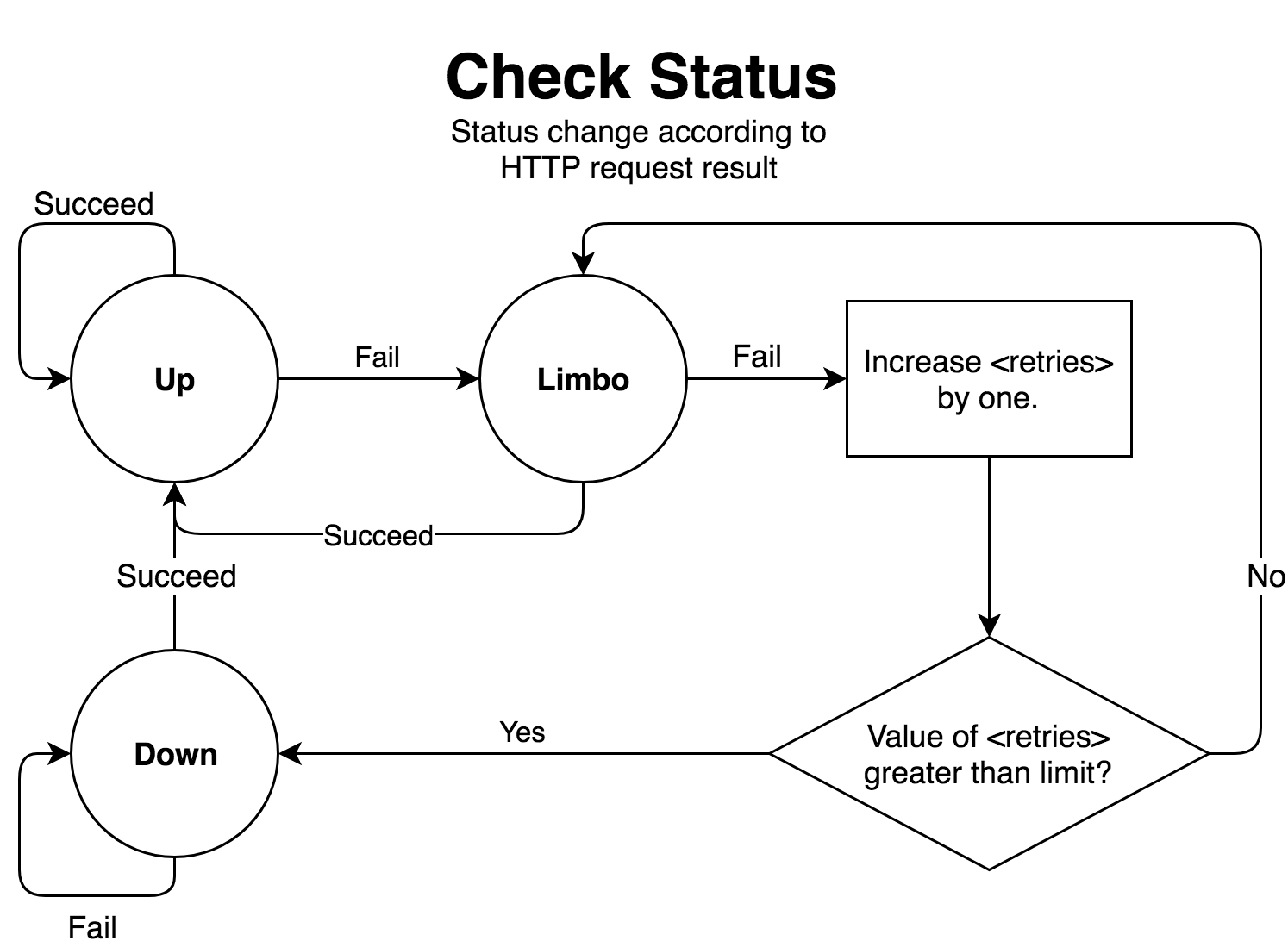https://github.com/rhardih/pong
Basic uptime monitoring system, with email alerts and/or push notifications
https://github.com/rhardih/pong
docker docker-compose mailgun rails rails5 telegram telegram-bot telegram-bot-api uptime uptime-monitor
Last synced: 5 months ago
JSON representation
Basic uptime monitoring system, with email alerts and/or push notifications
- Host: GitHub
- URL: https://github.com/rhardih/pong
- Owner: rhardih
- License: mit
- Created: 2019-02-08T13:39:55.000Z (over 6 years ago)
- Default Branch: master
- Last Pushed: 2023-08-19T00:30:51.000Z (almost 2 years ago)
- Last Synced: 2025-01-14T11:21:08.777Z (6 months ago)
- Topics: docker, docker-compose, mailgun, rails, rails5, telegram, telegram-bot, telegram-bot-api, uptime, uptime-monitor
- Language: Ruby
- Homepage:
- Size: 118 KB
- Stars: 96
- Watchers: 2
- Forks: 7
- Open Issues: 3
-
Metadata Files:
- Readme: README.md
- Changelog: CHANGELOG.md
- License: LICENSE
Awesome Lists containing this project
- awesome-starred - rhardih/pong - Basic uptime monitoring system, with email alerts and/or push notifications (telegram)
README
# Pong
[](https://travis-ci.org/rhardih/pong)
A minimal availability monitoring system with email alerts and push notifications.
- [Changelog](https://github.com/rhardih/pong/blob/master/CHANGELOG.md)
- [Screenshots](https://github.com/rhardih/pong/blob/master/screenshots)
## Requirements
Pong is a dockerized Rails application run via docker-compose, so both a host
running [docker](https://www.docker.com/get-started) and a client with
[compose](https://docs.docker.com/compose/install/) are required.
## Configuration
### Notifications
#### EMail
By default Pong uses [mailgun](https://www.mailgun.com/) as delivery method for
ActionMailer. There's no specific reason other than easy integration via
mailgun-ruby, and because they have a free plan with more than enough monthly
sends for the purpose of occasional email alerts.
Since the free plan doesn't allow ad-hoc delivery, it's necessary to add the
alert receiver as an [Authorized
Recipient](https://help.mailgun.com/hc/en-us/articles/217531258-Authorized-Recipients)
in the mailgun account settings.
The application expects the following environment variables, either added in the
default compose file, or added in the
[.env](https://github.com/rhardih/pong/blob/master/.env) file.
```
MAILGUN_API_KEY
MAILGUN_DOMAIN
EMAIL_SENDER
EMAIL_RECEIVER
```
The sender is set as as default *from* address for all alerts, and the receiver
is the target address for all alert mailings.
For now Pong only supports a single global receiver.
#### Push (via [Telegram](telegram.org))
Pong supports push notifications, via direct chat messages over Telegram. This
requires creating a dedicated [Telegram bot and corresponding API key](https://core.telegram.org/#bot-api).
Here's the necessary steps:
| | |
|:--|---|
|1. Open the application, search for *botfather* and start a chat. | |
|2. Create a new bot by issuing the `/newbot` command. |  |
|3. Go through the naming steps. Any name will do, but you'll need it shortly, so make it something you can remember. Once done, you'll be given a token to access the HTTP API.
4. Copy the API key into the the `.env` file for Pong.
5. We need the *id*, of the chat we're going to use for notifications. Pong includes a rake task, that runs the bot and replies with the id when a chat is started. Run this before the next step:
**$ docker-compose run web bin/rake telegram:run** | |
|6. Next open a chat with the newly created bot. Here you need the name you chose in step 3. | |
|7. Upon joining the chat with the bot, you will be given the chat id we need.
8. Copy the chat id into the `.env` file, as you did with the api key and you're all set. Now Pong will send you notifications via this chat. | |
### Docker image
For easier deployment, Pong is packaged as a fully self-contained docker image
in production mode. A default image build is available on the
[dockerhub](https://hub.docker.com/r/rhardih/pong), but a custom or self built
image can be used by setting the corresponding environment variable:
```
PROD_IMAGE=rhardih/pong:latest
```
## Run
Bring up all compose services with:
```bash
docker-compose up -d
```
### Database creation & initialization
```bash
docker-compose run web bin/rake db:create
docker-compose run web bin/rake db:migrate
```
### How to run the test suite
This app uses the default minitest framework.
In development mode, a test compose service with a spring preloaded environment
is added for running tests faster.
To run all tests:
```bash
docker-compose exec test bin/rake test
```
To run specific test:
```bash
docker-compose exec test bin/rake test TEST=test/jobs/request_job_test.rb
```
## Services
The default application stack, as can also be seen in
[docker-compose.yml](https://github.com/rhardih/pong/blob/master/docker-compose.yml),
consists of the following components:
* Database server running [PostgreSQL](https://www.postgresql.org/).
* Key value store running [redis](https://redis.io/).
* A worker instance, running a [resque](https://github.com/resque/resque) worker.
* A static job scheduler running
[resque-scheduler](https://github.com/resque/resque-scheduler).
* Default Puma web server.
### Development
Aside from the services listed above, these are added for local development:
* A test instance, with a preloaded spring environment.
* A [MailCatcher](https://mailcatcher.me/) instance.
## Deployment instructions
Assuming the production host is reachable and running docker, setting the
following should be enough to let compose do deploys:
```
DOCKER_HOST=tcp://:2376
DOCKER_TLS_VERIFY=1
```
Then adding reference to the production config:
```bash
docker-compose -f docker-compose.yml -f production.yml up -d
```
Remember to create and initialize the database as well.
## System design notes
### Check
In order to somewhat alleviate spurious alert triggerings, when a request for a
check fails, it is put into an intermediate state of *limbo*. If a set number of
subsequent request attempts are still failing, the check will then be marked as
being *down*
Below is transition diagram illustrating how the status of a Check changes:

One thing to note, is that when a check is either in *limbo* or is *down*, its
interval is disregarded, and a request is triggered every time the queue job is
running, which is roughly once every minute.